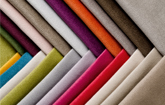NEW YORK, Jan. 17, 2025 /PRNewswire/ -- The global automation market in textile industry size is estimated to grow by USD 775.92 million from 2024 to 2028, according to Technavio. The market is estimated to grow at a CAGR of over 3.75% during the forecast period. The report provides a comprehensive forecast of key segments below-
Segmentation Overview
- Component
- 1.1 Field devices
- 1.2 Control devices
- 1.3 Communication
- Solution
- 2.1 Hardware and software
- 2.2 Services
- Geography
- 3.1 APAC
- 3.2 Europe
- 3.3 North America
- 3.4 South America
- 3.5 Middle East and Africa
- Country
China, India, US, Canada, Germany, UK, Pakistan, France, Brazil, and Saudi Arabia
Get a glance at the market contribution of rest of the segments - Download a FREE Sample Report in minutes!
1.1 Fastest growing segment:
The textile industry's automation market experienced significant growth in 2022, with the field devices segment leading in revenue generation. Comprising motors, drives, valves, and actuators, these devices are essential for controlling machinery functions and the dyeing process. Their extensive use results in high replacement rates, driving sales. As the textile industry continues to upgrade facilities, demand for automation solutions, particularly field devices, is expected to increase, fueling market expansion. These devices are fundamental to the industry, and their demand is projected to rise throughout the forecast period due to ongoing investments in the industrial sector.
Analyst Review
The automation market in the textile industry is witnessing significant growth due to the increasing demand for high-quality, efficient, and sustainable textile production. Automation in textile processing includes various stages such as blow room line, finishing line, ginning, carding, drawing, and spinning. Automation in raw material upgrading through processes like autolevellers and sensors enhances resolution and reduces wastage. Robotics and automation in knitting, dyeing, and garment assembly increase factory production and improve product consistency. Process boosting technologies like automatic curling and resolution control optimize energy usage and improve product quality. Overall, automation in textile processing leads to the production of high-quality goods while reducing production costs and enhancing sustainability.
Market Overview
The automation market in the textile industry is experiencing significant growth due to the integration of advanced technologies such as Blow room lines, Finishing lines, and automated systems in various textile processing stages. These automated solutions are revolutionizing textile manufacturing by boosting process efficiency, effective raw material upgrading, and optimizing production. Automation is transforming textile processing through innovative technologies like automatic curling, Autolevellers, and shuttless looms. Investa air jet technology and traveling future are leading the way in heat recuperation and exhaust air purification, ensuring environmental safety. Textile finishing operations are being automated with practical solutions, including sizing, dye houses, and optimization of color accuracy and design flexibility. Digital printing technologies and AI algorithms are enhancing production efficiency, product quality, and operational flexibility. The textile industry is embracing automation for apparel, home textiles, technical textiles, and industrial textiles, resulting in faster turnaround times, customization, and resource utilization. Technology advancements, such as smart textiles and wearable technologies, are integrating electronic components and sensors for enhanced functionality. Investment in automation requires careful financial planning, compatibility with existing IT infrastructure, and consideration of workforce displacement, data security, and intellectual property rights. The future of textile manufacturing lies in modern technology, resolution, and factory production, with a focus on sustainability, waste minimization, energy consumption, and environmental impact.
To understand more about this market- Download a FREE Sample Report in minutes!
1 Executive Summary
2 Market Landscape
3 Market Sizing
4 Historic Market Size
5 Five Forces Analysis
6 Market Segmentation
7 Customer Landscape
8 Geographic Landscape
9 Drivers, Challenges, and Trends
10 Venodr Landscape
11 Vendor Analysis
- ATE Pvt. Ltd.
- Baumuller Nurnberg GmbH
- BrainChild Electronic Co. Ltd.
- Classic Loom Data
- Cotmac Electronics Inc.
- Delta Electronics Inc.
- Festo SE and Co. KG
- Hitachi Ltd.
- Honeywell International Inc.
- KUKA AG
- Lenze SE
- Parker Hannifin Corp.
- Rockwell Automation Inc.
- SAURER INTELLIGENT TECHNOLOGY AG
- Schneider Electric SE
- SIEGER SPINTECH EQUIPMENTS Pvt. Ltd.
- Siemens AG
- Yaskawa Electric Corp.
12 Appendix
About Technavio
Technavio is a leading global technology research and advisory company. Their research and analysis focuses on emerging market trends and provides actionable insights to help businesses identify market opportunities and develop effective strategies to optimize their market positions.
With over 500 specialized analysts, Technavio's report library consists of more than 17,000 reports and counting, covering 800 technologies, spanning across 50 countries. Their client base consists of enterprises of all sizes, including more than 100 Fortune 500 companies. This growing client base relies on Technavio's comprehensive coverage, extensive research, and actionable market insights to identify opportunities in existing and potential markets and assess their competitive positions within changing market scenarios.
Contacts
Technavio Research
Jesse Maida
Media & Marketing Executive
US: +1 844 364 1100
UK: +44 203 893 3200
Email: [email protected]
Website: www.technavio.com/
SOURCE Technavio

WANT YOUR COMPANY'S NEWS FEATURED ON PRNEWSWIRE.COM?
Newsrooms &
Influencers
Digital Media
Outlets
Journalists
Opted In





Share this article